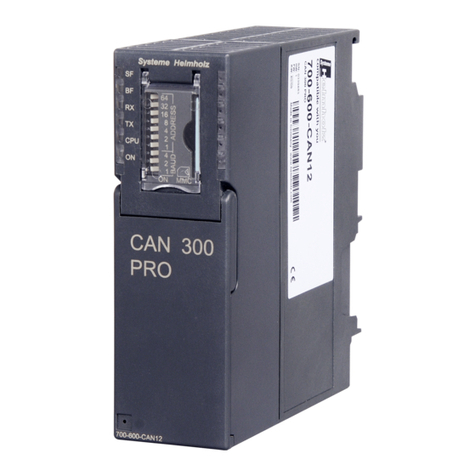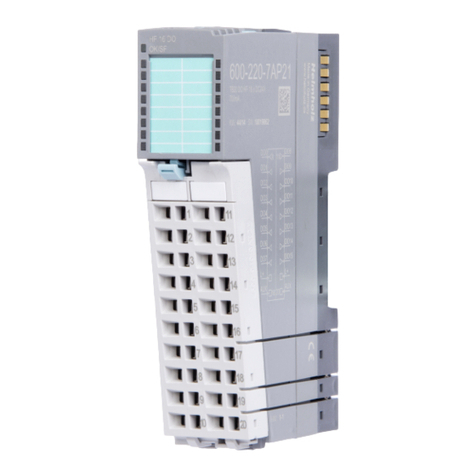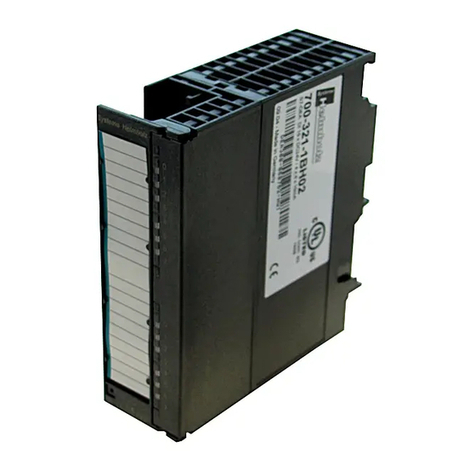
-
TB20 CANopen Coupler | Version 6 | 09.03.2020 6
7.9.5. PDO Transmission Type (SDOs 14xx/18xx, Subindex 2) ..................................................52
7.9.6. PDO Inhibit Timer (SDOs 14xx/18xx, Subindex 3)...........................................................53
7.9.7. PDO Event Timer (SDOs 14xx/18xx, Subindex 5).............................................................53
7.10. Module Parameter Configurations (SDO 30xx).....................................................................54
7.11. Storing a Parameter Configuration (SDO 1010) ....................................................................55
7.12. Restoring Factory Settings (SDO 1011) ..................................................................................55
7.13. Module Diagnostics (SDO 31xx)............................................................................................56
7.14. Behavior in the Event of an Error (SDO 1029) .......................................................................57
7.15. Hot-swap function (SDO 2020) .............................................................................................58
8. SDO object table ......................................................................................59
8.1. System objects (SDO 1000–1200, 2020) ................................................................................59
8.1.1. Device Type (1000)............................................................................................................59
8.1.2. Error Register (1001)..........................................................................................................59
8.1.3. Pre-Defined Error Field (1003)...........................................................................................59
8.1.4. Number of PDOs (1004) ....................................................................................................59
8.1.5. SYNC identifier (1005) ......................................................................................................59
8.1.6. Device Name (1008)..........................................................................................................59
8.1.7. Hardware version (1009)...................................................................................................60
8.1.8. Firmware version (100A) ...................................................................................................60
8.1.9. Node ID (100B)..................................................................................................................60
8.1.10. Guard Time (100C) ...........................................................................................................60
8.1.11. Life Time Factor (100D).....................................................................................................60
8.1.12. Store (1010) (Used to Store Parameters) ............................................................................60
8.1.13. Restore (1011) (Used to Load Parameters).........................................................................60
8.1.14. Emergency identifier (1014)..............................................................................................61
8.1.15. Consumer Heartbeat (1016)..............................................................................................61
8.1.16. Producer Heartbeat (1017) ................................................................................................61
8.1.17. Identity Object (1018).......................................................................................................61
8.1.18. Module List (1027) ............................................................................................................62
8.1.19. Object Behavior in Case of Error (1029) ............................................................................62
8.1.20. SDO server parameters (1200) ...........................................................................................62
8.1.21. Hot-swap behavior (2020).................................................................................................62
8.2. RPDO Communication Parameters (SDO 14xx)....................................................................63
8.3. RPDO Mapping (SDO 16xx) ..................................................................................................63
8.4. TPDO Communication Parameters (SDOs 18xx) ..................................................................63
8.5. TPDO Mapping (SDO 1Axx) ..................................................................................................63
8.6. Coupler identification (SDO 200x)........................................................................................64
8.6.1. Module ID of the coupler (2001).......................................................................................64































